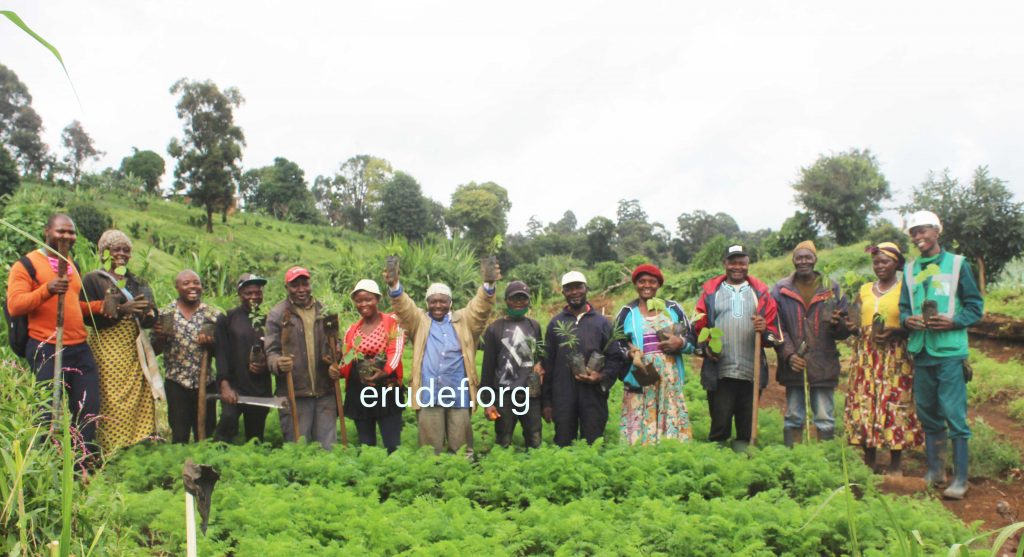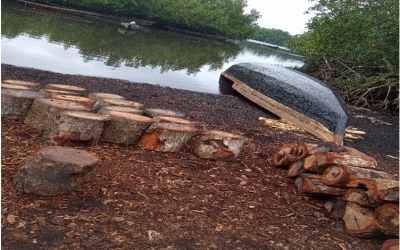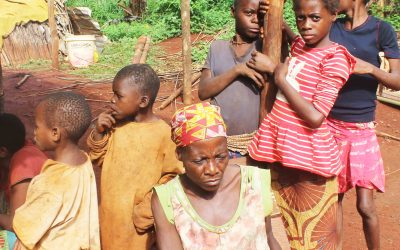According to the 2019 UN report, 2 billion people around the world still lack access to safe water and sanitation. UNICEF also reports that at least 600 children die everyday from water related diseases such as diarrhea caused by poor water, sanitation and hygiene around the world. Water resources are facing a host of threats, all of which are caused primarily by human activities These threats include sedimentation, pollution, deforestation, landscape changes, wetlands removal, urban growth and a host of others. Each type of change to a landscape will have its own specific impact, usually directly on natural ecosystems and directly or indirectly on water resources. For a proper water management, a holistic ecosystem approach is strongly recommended. This involves maintenance of water catchment recharge and the protection of riparian forests.
A riparian forest is the forested area of land adjacent to a water body, stream, river, bay or marsh. Riparian forests form the transition between the aquatic and the terrestrial environment. These forests form a canopy, which shades the stream. The shade moderates water temperature and protects the water against fluctuations in temperature that can be detrimental to the stream ecosystem’s health. Riparian forests also stabilize stream banks by providing deep root systems which hold the soil in place and by providing a degree of roughness capable of slowing runoff velocity and spreading flow during storm events. Unfortunately, many people are unaware of the importance of retaining the riparian vegetation and therefore clear the land right to the edge of the stream
To fill the knowledge gap, the Environment and Rural Development Foundation (ERuDeF) together with her partners (the International Tree Foundation (ITF), TreeSisters, Darwin Initiative, and the government of Cameroon) are committed to sensitizing the local population on the importance of conserving riparian forests and restoring degraded ones by planting trees. Indeed, trees will help attract rain, retain water in the soil and recharge groundwater tables. Trees will also keep nutrient pollution from agricultural sources out of the water by recycling excess nitrogen and reducing soil erosion. The ongoing project on this direction is found in Mt Bamboutos landscape that cuts across three administrative regions of Cameroon, the Northwest, Southwest and the west regions. The Mount Bamboutos Initiative, as this project is called seeks to restore 35000ha of the degraded Mount Bamboutos through the planting of 15 million trees in 15 years. Riparian forests in this landscape are increasingly being leveled down to make room for agricultural land that is in high demand.
ERuDeF and her partners this year (2020) spearheaded tree planting in Mount Bamboutos landscape to restore these riparian forests, likewise water catchments across the landscape. Femmouck village in the West Region of Cameroon is one of the villages where trees are being planted planted in riparian forests. Femmouck village, it should be noted is a horticulture hub and the practice of “dry season farming” is very common hear. This explains why most riparian forest are increasingly being evaded. As a result of continues sensitization, locals of this community just like other communities in the Mount Bamboutos landscape, are surrendering “riparian forest converted to farm lands” for tree planting.

locals of Femmouck after planting Trees in Riparian Forests Tacuzine Brigitte is a mother of 5. The 48-year-old is amongst the pioneers of the Mount Bamboutos Initiative in Femmouck village. She owns a farm near one of Femmouck’s mean river. This river has no riparian forest again given that it has been converted to farmlands. Brigitte just like many others surrendered part of his farm near this river for trees to be planted on. “I didn’t know the importance of riparian forests until ERuDeF and her local partners schooled us on their importance. We had ignorantly levelled them down to make room for farm lands. Am personally pleased that we a re reversing this unfortunate situation with the planting of trees. I hope that in the next five years to come, most of our rivers will be covered with trees once again” Tacuzine Brigitte said with a beaming smile on her face.

Tacuzine BrigitteMount Bamboutos is the second most important water tower in Cameroon after the Adamawa plateau but it is already losing its functions because of severe human pressures such as the expansion of settlement and agricultural lands on the mountain and poor irrigation practices. Indeed, farmers irrigate their crops in the dry season and watershed does not recharge since the degraded nature of the mountain does not promote catchment recharge. This situation is negatively impacting 81,257 people living downstream given that there is acute water shortages. ERuDeF is contributing to the restoration of about 5,000 ha of riparian forest in this landscape and is planning to expand that surface area in the coming years by extending to other landscapes such as the Adamawa Plateau and the Mandara Mountains. ERuDeF will continue to engage local and international partners likewise the government of Cameroon in order to achieve this dream.


